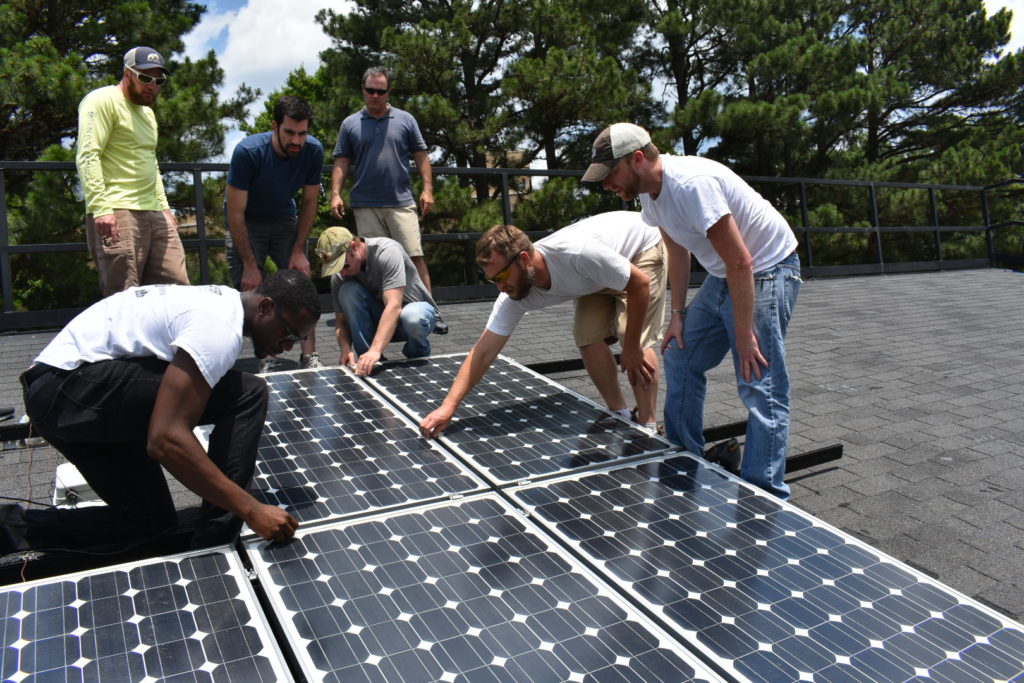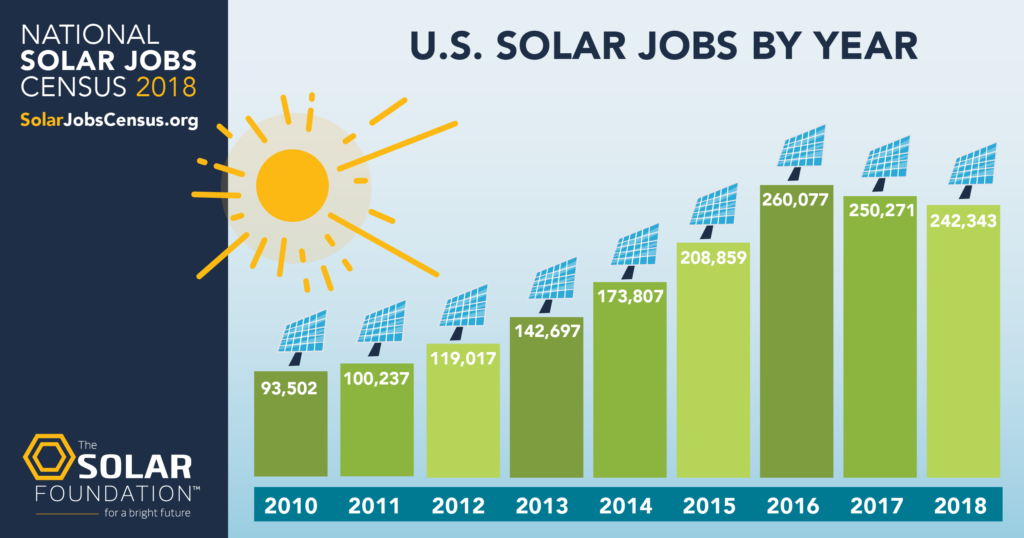Solar Energy Industry Jobs
As the solar energy industry continues to grow in the world, the United States and North Carolina, the prospect of finding a solar energy job is becoming more and more feasible.
There are currently 11 million renewable energy jobs in the world. About 4.5 million of those jobs are in solar, and more than 240,000 of those solar jobs are in the United States. The national solar workforce has grown 159 percent since the first National Solar Jobs Census was released in 2010.
According to the US Bureau of Labor Statistics, employment of solar PV installers is projected to grow 105 percent from 2016 to 2026, which is quicker than the average for all occupations.
North Carolina is currently second in the nation for solar. The state’s growth is projected to be 3,939 megawatts (MW) over the next five years.
According to the NC Solar Report from Solar Energy Industries Association (SEIA) in Quarter 1 2019, solar is the second largest contributing sector in the clean energy industry in North Carolina. A total of 553 companies are providing 6,457 jobs and generating $2.9 billion in revenue. There are currently 660, 101 state homes powered by solar in North Carolina, and 5.37 percent of the state’s electricity is solar-based. Prices for solar installations have also fallen nearly 34 percent over the last five years, and there has been a total of 11,423 solar installations in the state. The total solar investment in the state is $7,977.58 billion.
“The continued expansion and adoption of solar panel installations will result in excellent job opportunities for qualified individuals, particularly those who complete photovoltaic training courses at a community college, technical school, or training centers like the NC Clean Energy Technology Center (NCCETC) at NC State University,” said Megan Berry, Senior Clean Energy Training Specialist at NCCETC.

Learn more about the Center’s training classes here.
The solar industry offers a wide range of employment opportunities for individuals from all backgrounds and all education levels, Berry said. Opportunities include project managers, site accessors, designers, engineers, sales representatives, manufacturers and many others.
“I’ve seen someone with no solar experience take our programs and have a job within a week,” Berry said. “I’ve also seen people who have a high school degree and background in construction easily get a job as an installer after taking our Fundamentals of PV Design & Installation class.”
Solar PV has both financial and environmental benefits, Berry said. Installing solar PV on a home can save on electric bills while also reducing greenhouse gas emissions and harmful air pollutants. In addition, solar energy helps boost U.S. energy independence and protects from rising energy costs.
“Solar PV (photovoltaics) is not only beneficial for the environment and your pocket, but is clearly creating employment opportunities since skilled workers are needed to keep up with this booming industry,” Berry said.
The 2018 median pay for an entry-level solar installer was $42,680 per year and $20.52 per hour. Wages are dependent on level of experience and are subject to change, but having qualifications like an electrical license or a NABCEP Certification or Credential, especially coupled with training like the NCCETC provides, can help one quickly advance in the field. Being an installer is not required to work in the solar industry.
“It’s easy to find a job in solar that fits your skills and interests,” Berry said. “And with the growth we’ve seen over the past couple of years, who wouldn’t want to?”
Learn more about the National Solar Jobs Census here, and learn more about NCCETC’s training opportunities here.
